
What is a Wide-Angle Lens?
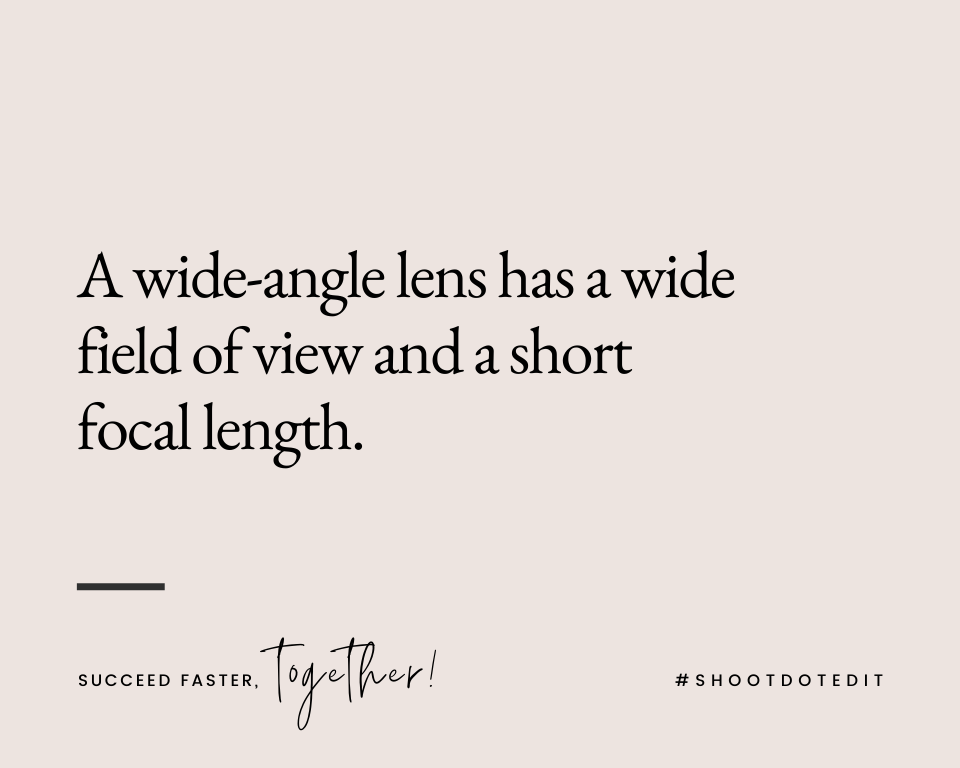
Just as the name suggests, a wide-angle lens has a wide field of view and a short focal length. Technically speaking, working on a full-frame camera, it is a lens with a focal length of 35mm or less. There are different types of lenses in this category – prime, zoom, and fisheye or ultra-wide-angle lenses. However, remember that your field of view is affected based on whether you are using full-frame or crop-sensor cameras.
The Importance of Wide-Angle Lens
One of the most common reasons to use a wide-angle lens is when you want to capture the scene from a wider perspective. In addition to that, they also let you introduce creative perspectives by adding a sense of distortion. This gives you the freedom to play with the elements in the scene. Depending on how you frame your scene, it can help you make parallel lines appear to converge or diverge. Moreover, using this lens, you can also make some small objects appear enlarged or stretched out and some massive objects tiny.
All in all, if you are photographing your couples outdoors, a wide-angle lens can come in handy. With this lens on your camera, you can easily introduce both foreground and background information into the image. Some commonly used lenses in this category include Canon EF 20mm f/2.8 USM, Canon EF 16-35 f/4 L IS, Sony 16-35mm f/2.8 GM FE, Nikon AF-S 14-24mm f/2.8 G, and Sigma 20mm f/1.4 DG HSM.
Suggested Read: How I Got The Shot With Salt & Pine Photography
Wide-Angle Wedding + Engagement Photo Inspiration From ShootDotEdit Customers
Now that we have taken you through how a wide-angle lens works, here are some photographs from ShootDotEdit customers to give you some visual insight into how it can work magic for you.
1. IQ Photo
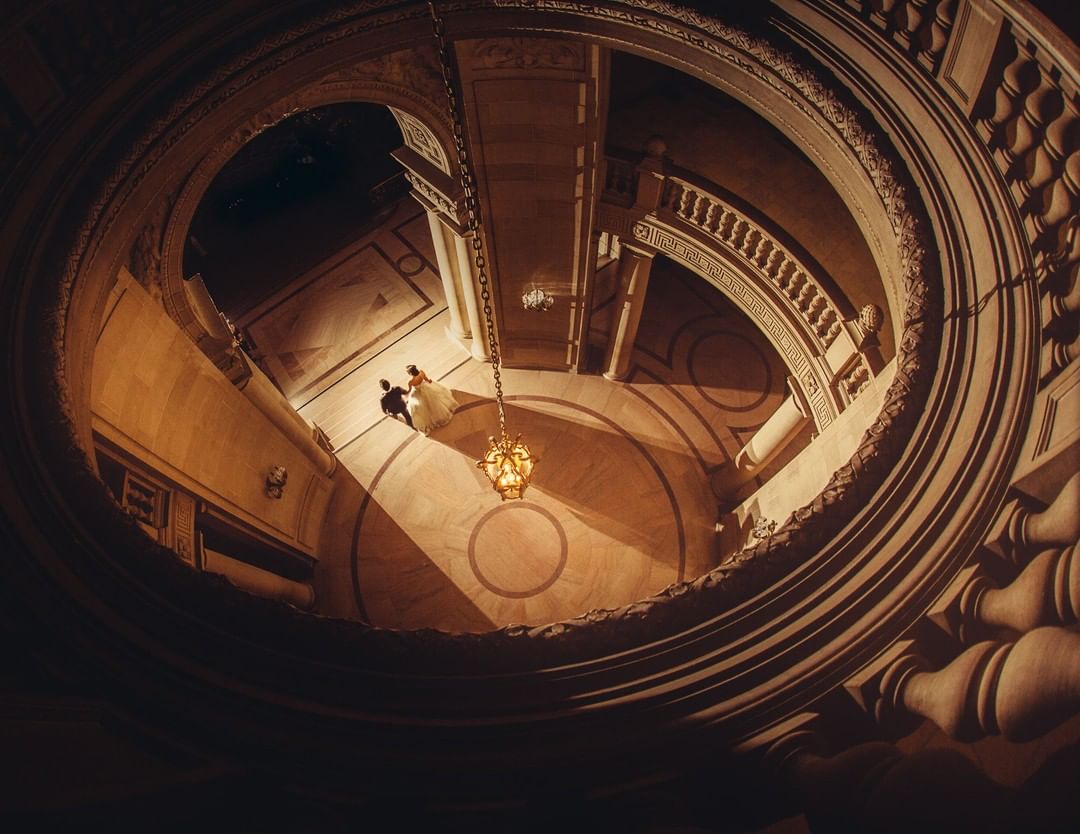
2. Taylor Kemp Photography

3. Photography by Orlando

4. Danny Dong Photography
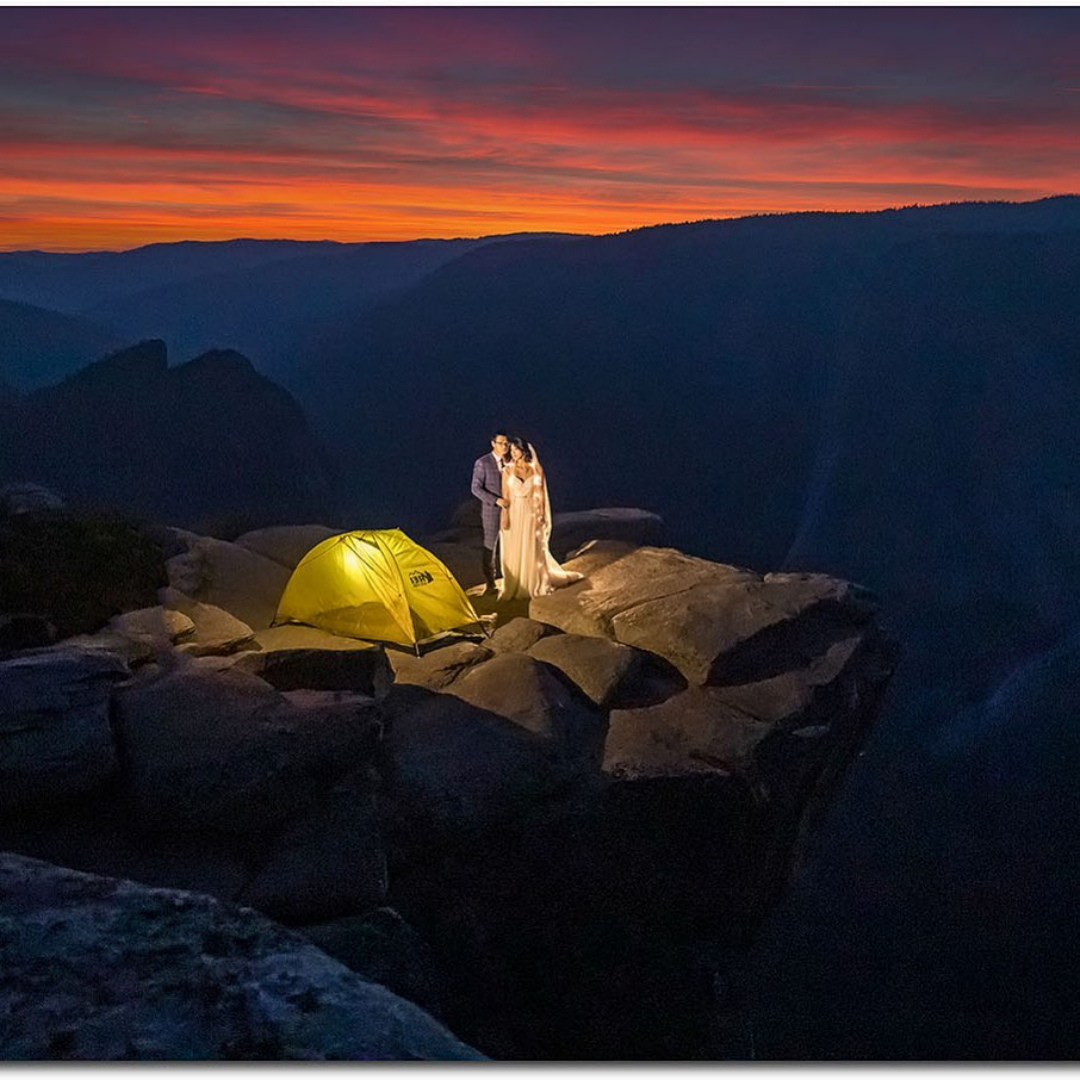
5. Erin Morrison Photography
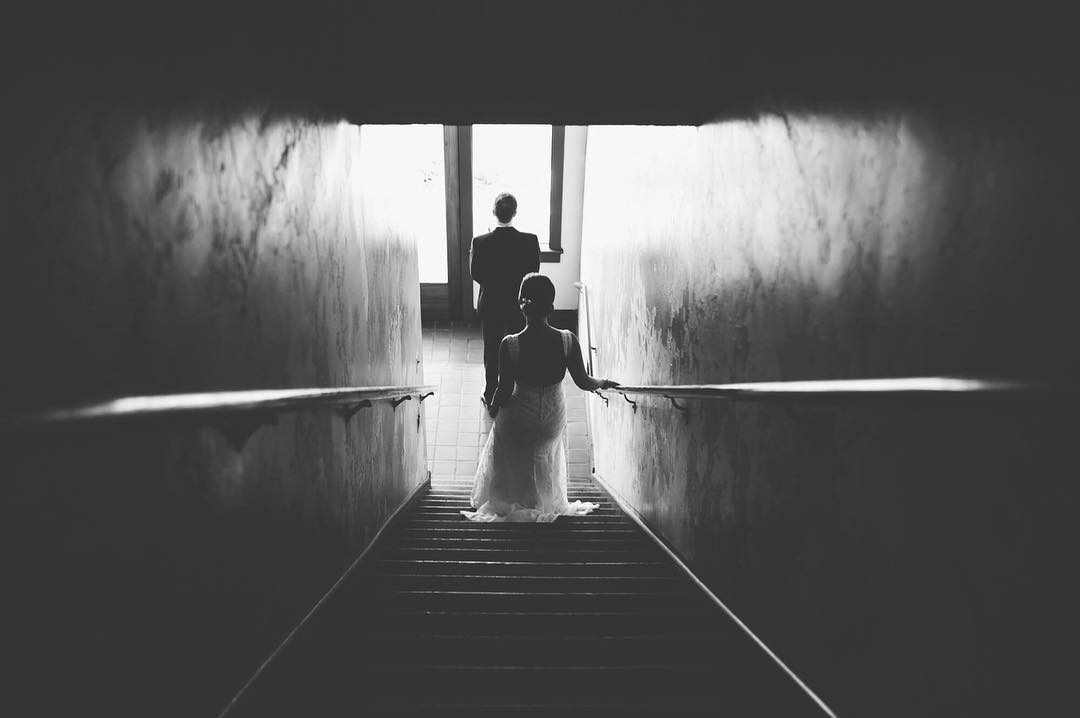
6. Robb McCormick Photography
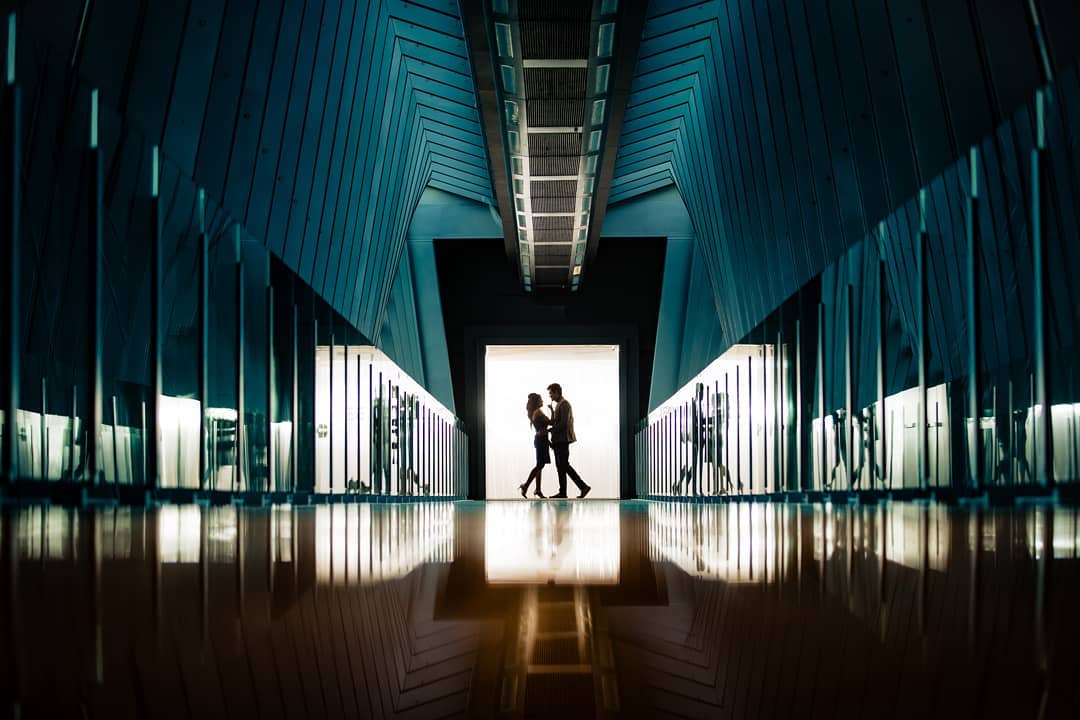
7. Jorge Santiago Photography
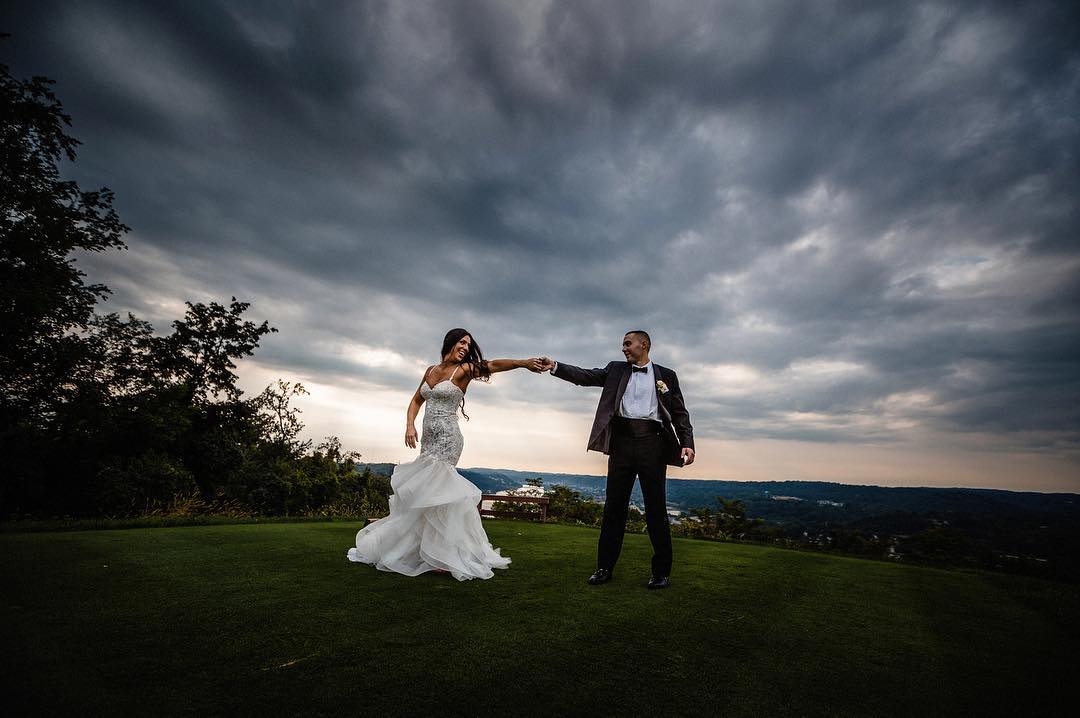
Suggested Read: Wedding Photo Ideas: Inspiration From ShootDotEdit Customers
Wide-Angle Photography Tips For Wedding Photographers
1. Focus on the Placement of Your Subject
When you are using a wide-angle lens, how you place your subject plays a significant role in defining the impact of the scene. Avoid placing an important subject near the edges as barrel distortion is more evident towards the edges. Moreover, this can lead to a loss in quality and, therefore, could divert a viewer’s attention away from the main subject.
2. Use Distortion to Enhance Your Scene
As we said before, you can use a wide-angle lens to cause distortion when you bring any object in the foreground close to the lens. However, you can use this distortion to your advantage when framed right. There are different types of distortions – barrel distortion, pincushion distortion, and mustache distortion.
In barrel distortion, parallel lines in the scene can appear to be converging. On the other hand, pincushion distortion leads parallel lines to appear to be diverging. And mustache distortion, also known as complex distortion, combines elements of barrel and pincushion distortion.
3. Cancel Negative Space
Even though wide-angle lenses allow you to get a lot of background and foreground information, details alone are not enough to create stunning imagery. A wide field of view, when not framed well, can also lead to negative space. This can make one part of your image appear clustered while the other, completely empty. The goal is to find balance.
4. Experiment With Perspectives
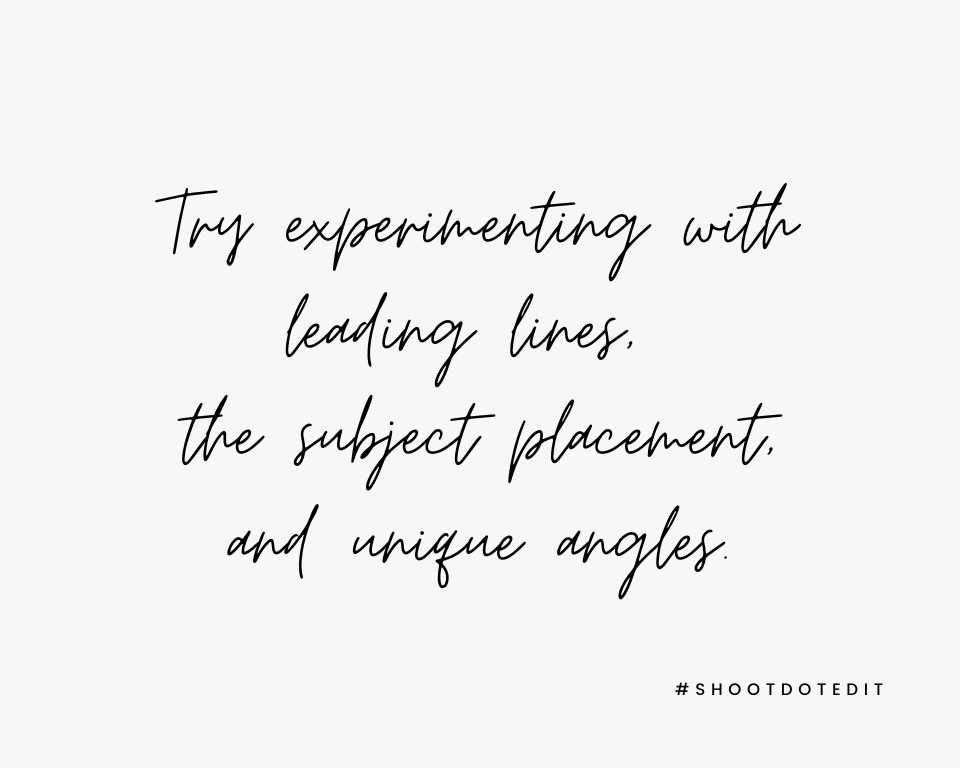
Wide-angle lenses offer you endless opportunities to experiment with different perspectives, which can help you create some interesting compositions. Try experimenting with leading lines, the subject placement, and unique angles to get an interesting take on the point of view. One of the unique perspectives you can experiment with is using such lenses to photograph inside a car.
5. Include a Strong Visual Anchor
When there are too many elements in your frame, the viewer’s focus can easily sway, creating a need to include a strong visual anchor to draw attention to. A visual anchor is an element in your image that keeps the viewer hooked to the picture – it could be your subject, an action object, or a color. Think in terms of imaginary layers and segregate different sections of your frame as per visual hierarchy.
Further Read: The Art Of Moody Wedding Photography: An Overview
Even though a wide-angle lens is a common part of landscape, sports, and street photography, it has also made its mark in wedding photography. From those over-the-top images that give you the essence of the entire scene to the dramatic sunset photographs, wide-angle lens photography has proved its ability to fit for different types of scenes. All you have to do is get started and get experimenting. We hope you found these images from ShootDotEdit customers just as inspiring as we did. Let us know what you think about them in the comments section below!
At ShootDotEdit, we strive to help lessen your post-production workload by offering professional photo editing services that match your style. To learn more about how we can help your wedding photography business, check out our pricing plans.


Leave a comment